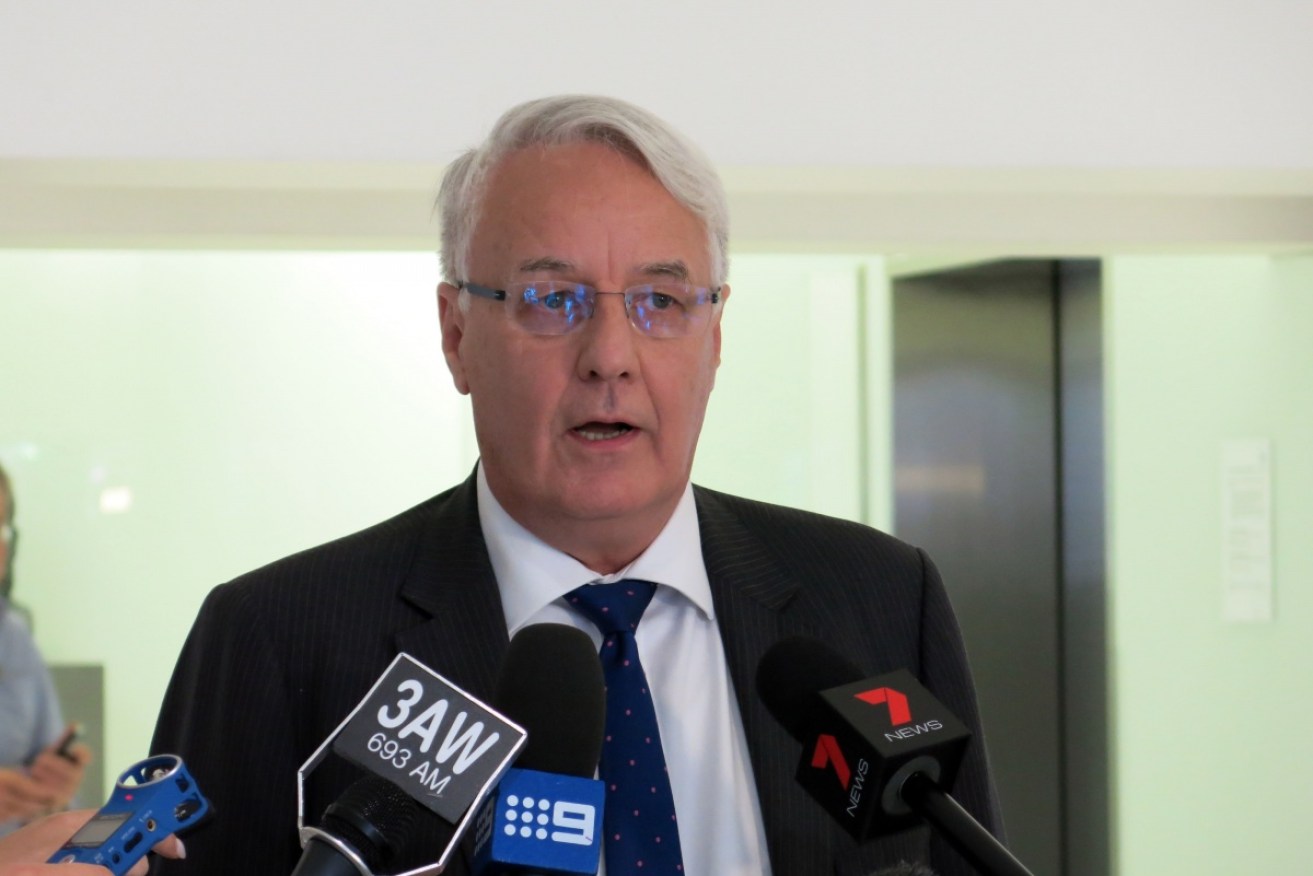Business groups launch attack on minimum wage

Australian Retailers Association executive director Russell Zimmerman has lined up against unions over casual workforce changes. Photo: AAP
Employer groups have called for the nation’s approximately 200,000 minimum-wage workers to take a pay cut of $100 a year in real terms, bolstered by a government that wants a “cautious approach” to wage growth.
The Australian Retailers Association, with the backing of another large employer group, made a submission on Wednesday arguing the minimum wage should increase by only 1.2 per cent this year.
That would be an effective reduction in real wages, as the annual rate of inflation (Q4 2015 to Q4 2016) is currently 1.5 per cent. If the judges responsible for setting the wage heed this advice, a low-paid worker’s buying power would be slashed by roughly $100 over the next 12 months.
It came as ACTU secretary Sally McManus used a nationally televised address to demand a 6.69 per cent increase to the “dangerously low” wage minimum, in order to prevent the creation of a US-style class of “working poor”.
The national minimum wage, currently just under $35,000 a year, is set by the Fair Work Commission, the same judicial body that cut Sunday penalty rates. The Commission is accepting submissions ahead of its July 1 verdict.
The ‘minimum wage’ is the minimum base rate of pay for ordinary hours worked by employees who are not covered by an award (an industry-wide ruling from the Fair Work Commission) or an enterprise bargaining agreement (a contract negotiated directly between a boss and their workers).
Many of the victims of this proposed cut to buying power work in the same sectors (retail, hospitality and fast food) where Sunday penalty rates will be cut by 25 per cent, unless Parliament intervenes.
By the government’s own figures, low-paid workers are more likely to be female, under 30, single without children, working part-time or casual in retail or accommodation/food, in a major city, with no university degree.
ARA executive director Russell Zimmerman defended a 1.2 per cent “increase” by arguing it would combat high unemployment while easing costs for employers battling tough economic conditions.
He also said that cutting the minimum wage in real terms (he described it as a “wage increase”) would make up for past years when it rose beyond inflation.
“Given economic uncertainties, historically low inflation along with rising costs for retailers, this 1.2 per cent increase will minimise employment losses in the weak labour market,” Mr Zimmerman said.
This is a perennial argument of employer groups and neoclassical economists: wage rises destroy jobs.
In its submission, the Turnbull government echoed this point by urging against an “excessive” increase. It argued “wage flexibility” would support employment while the economy recovers from the mining wind down and the global crisis.
The problem with this argument is that reams of academic studies have found little to no evidence that minimum wage increases push up overall unemployment.
There is evidence, however, that increases may harm the employment prospects of youths, the long-term unemployed and the low-skilled.
The ARA said its submission was made in consultation with the Australian Chamber of Commerce and Industry. Another employer group, The Australian Industry Group, is arguing for a 1.5 per cent increase, which would effectively mean no change in real terms.
In a speech to the National Press Club, Ms McManus argued for a much bigger increase, from $672.70 to $717.70 a week.
“Imagine what it’s like living on $35,000 a year anywhere in Australia, let alone in Sydney and Melbourne,” she said.
“In 1985, the minimum wage was nearly two-thirds of the average wage. Today it is well under half. This is dangerous for two reasons: It creates a class of working-poor that exists in the US. And a low minimum wage provides a big incentive for employers to destroy good, steady jobs, jobs that are fairly paid, by outsourcing them, cancelling agreements and using labour hire.”
Since 2000, the Australian minimum wage (in US dollars and at purchasing power parity) has ranked either third or fourth in the OECD behind Luxembourg, Netherlands and Belgium.
But between 1907 and 2010, Australia’s minimum wage increased in real terms by only 214 per cent, while average wages increased 394 per cent.
In its submission, Labor advised the Commission to factor in the impact of penalty rate cuts, rising living costs, and the government’s “range of harsh and unfair” policies.









